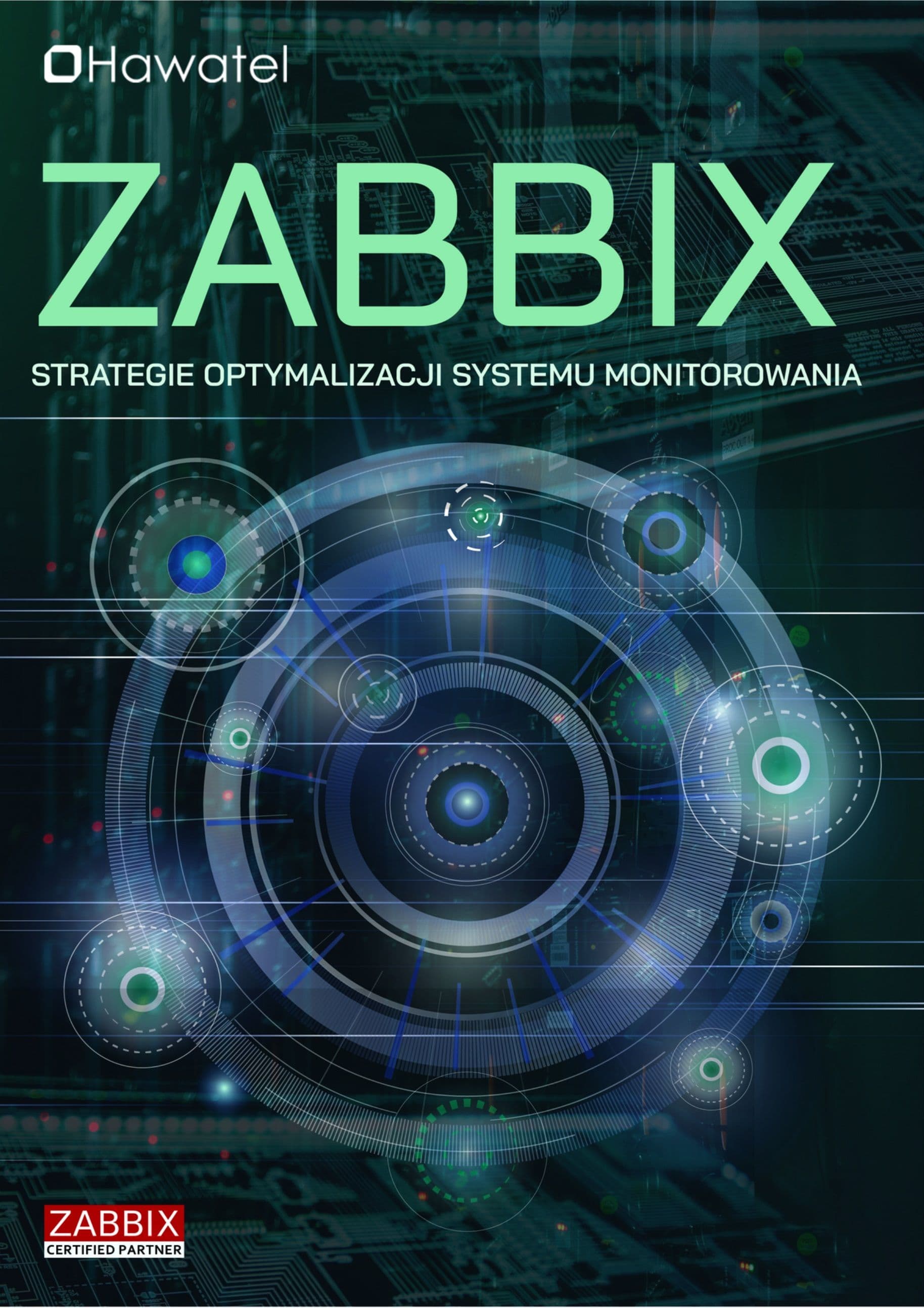Welcome to Hawatel's blog!
June 26, 2025 | General / Monitoring / Infrastructure management / Software
Zabbix vs. SolarWinds. Which solution should you choose?
Choosing the right tool for IT infrastructure monitoring can significantly impact the efficiency of managing a company’s technological environment. There are many solutions available on the market, with Zabbix and SolarWinds standing out in particular. Each of these tools has evolved in a different direction — in terms of features, deployment model, and licensing. In this article, we present their key characteristics and differences to help you make an informed decision.
Zabbix and SolarWinds
Zabbix is an open-source real-time monitoring tool that allows you to track the performance of servers, network devices, applications, and cloud environments. Its flexibility and free model make it attractive for companies of all sizes, especially those with limited budgets.
SolarWinds, known for modules like Network Performance Monitor (NPM) and Server & Application Monitor (SAM), is a commercial platform primarily aimed at large organizations. It offers advanced features such as automatic network mapping and detailed reporting, but comes with high licensing costs.

Pricing model: Open source vs. licensing
Cost is one of the most important factors when choosing a tool. Zabbix is completely free in its open-source version, allowing companies to implement full monitoring without incurring license fees. Optional paid enterprise support is available for those who need professional assistance, but the basic version provides all key features. This makes Zabbix ideal for small and medium-sized businesses looking to minimize expenses.
SolarWinds operates under a licensing model, with pricing based on the number of monitored nodes. In large infrastructures, costs can be significant, making it less accessible for budget-conscious companies. For large organizations that value out-of-the-box solutions and support, SolarWinds is a justified investment—but for smaller companies, it may be too expensive.
Scalability: Small networks vs. large enterprises
Zabbix stands out with its ability to create custom templates, scripts, and integrations, allowing monitoring to be tailored to specific needs. For example, a company can configure Zabbix to track unique metrics like latency in a custom API or data from IoT devices. This flexibility is especially valuable in environments where standard templates aren’t sufficient.
SolarWinds offers many ready-made templates covering common scenarios, but its customization capabilities are more limited. Adapting monitoring to custom requirements may require additional effort or purchasing specialized modules, which increases costs.
Ease of use: Technical flexibility vs. intuitiveness
Zabbix has a functional but less intuitive interface that requires technical knowledge. The learning curve is steep, especially for new users, but advanced administrators appreciate its flexibility. SolarWinds emphasizes simplicity, offering a modern interface with attractive dashboards and widgets that make daily tasks easier.
For companies wanting to minimize training time, SolarWinds is more accessible. However, for those with technical teams ready for configuration, Zabbix offers more control.

Source: Zabbix
Compatibility: Versatility vs. specialization
Zabbix is cross-platform, supporting Windows, Linux, Unix, as well as cloud and hybrid environments. This makes it an ideal choice for companies operating in heterogeneous infrastructures. For example, an organization with Linux servers, Windows workstations, and AWS-hosted applications can monitor everything from a single panel.
SolarWinds, while versatile, is more oriented toward Windows environments. Its modules are optimized for the Microsoft ecosystem, which may limit flexibility in diverse setups. For companies primarily running Windows, SolarWinds works smoothly, but in mixed environments, Zabbix has the edge.
Customization capabilities: Flexibility vs. out-of-the-box solutions
Tailoring the tool to a company’s specific needs is another important aspect. Zabbix excels in this category due to its open-source nature. Users can create custom templates, scripts, and integrations, allowing precise monitoring aligned with unique requirements. This flexibility is especially valuable in environments where standard solutions fall short.
SolarWinds provides many ready-made templates covering most common scenarios, but its customization capabilities are more limited. The platform is designed for ease of use, which sometimes means less flexibility in unique cases. For companies that prefer ready-to-use solutions, SolarWinds is more convenient, but Zabbix wins in scenarios requiring deep customization.
Monitoring and alerting: Depth vs. visualization
Both tools offer advanced monitoring features, but differ in the details. Zabbix enables in-depth monitoring of servers, network devices, applications, and cloud environments. Its alerting system is highly flexible, supporting notifications via email, SMS, and even messengers like Slack or Telegram. The ability to define complex trigger rules makes Zabbix a powerful tool for organizations needing precise monitoring.
SolarWinds stands out in network monitoring, especially with SNMP protocol support and automatic dependency mapping in the infrastructure. Its reports are detailed, and visualizations help quickly identify issues. Its alerting system is also advanced but focuses more on ease of configuration than deep customization. In this category, both tools are strong - SolarWinds excels in network visualization, while Zabbix leads in flexibility.

Source: Zabbix
Security: Strong foundations in both cases
Data and infrastructure security is a priority for any IT tool. Zabbix offers strong encryption, flexible permission schemes, and the ability to integrate with external authentication systems such as LDAP or Active Directory. Its open-source nature allows code audits, which is an additional benefit for security-conscious organizations.
SolarWinds also prioritizes security, offering features such as HTTPS, FIPS compliance, and automatic account lockouts in case of suspicious activity. Its integration with the Orion platform ensures consistent security management across the ecosystem. Both tools are solid in terms of security, but SolarWinds may be more attractive to organizations following strict enterprise standards.
Community and support: Open source vs. enterprise
Technical support and community are important factors, especially when dealing with configuration or operational issues. Zabbix benefits from an active open-source community that offers forums, documentation, and plenty of tutorials. However, compared to commercial solutions, community support can be less predictable. For companies needing professional help, Zabbix offers paid enterprise support.

SolarWinds, as a commercial solution, provides access to professional technical support as part of the license. Additionally, the platform has a large user community, and its THWACK forum is a knowledge hub offering tutorials, plugins, and ready-made solutions. In terms of support, SolarWinds has a clear advantage—especially for large organizations.
Case study: Monitoring a hybrid infrastructure in a tech startup
Scenario: A tech startup is developing a SaaS platform running on a mixed infrastructure: Linux servers in a local data center, applications hosted in AWS, and IoT devices collecting customer data. The company needs monitoring for custom metrics (e.g., API latency, IoT resource usage, PostgreSQL performance) while keeping costs to a minimum due to a limited budget.
Why Zabbix was chosen:
- Flexible configuration: Zabbix allows the creation of custom templates for monitoring specific metrics such as API latency or IoT data, without the need to purchase additional modules.
- No licensing costs: The startup can implement Zabbix for free, which is crucial compared to SolarWinds, where licensing for multiple devices and cloud services quickly generates high costs.
- Support for heterogeneous environments: Zabbix works seamlessly on Linux, in AWS, and with IoT devices, while SolarWinds is more Windows-oriented, limiting its flexibility in this scenario.
- Open source community and integrations: Zabbix offers ready integrations with tools like Grafana, which the startup can use for data visualization, along with community support for custom IoT solutions.
Comparison with SolarWinds: SolarWinds offers out-of-the-box templates for popular applications and clouds, but customizing them for IoT metrics or specific APIs requires extra effort and potentially expensive modules. High licensing costs make SolarWinds less viable for a budget-limited startup, and its lower flexibility in heterogeneous environments makes full monitoring coverage harder to achieve.
| Feature | Zabbix | SolarWinds |
|---|---|---|
| Licensing | Open Source (Free) | Paid, Licensed |
| Cost | Free (optional paid support) | Expensive, based on device count |
| Scalability | Highly scalable, ideal for large environments | Scalable, but cost increases with size |
| Ease of Configuration | More complex, requires technical knowledge | Easier, out-of-the-box solutions |
| Technical Support | Open-source community, paid support | Dedicated enterprise support |
| Monitoring Features | Broad capabilities, especially for advanced users | Comprehensive, ready to use out of the box |
| User Interface | Can be complex, less intuitive | Intuitive |
| Reporting & Analysis | Reporting, alerts, analysis | Reporting, alerts, analysis |
| System Requirements | Lightweight, can run on minimal resources | Requires more computing power |






